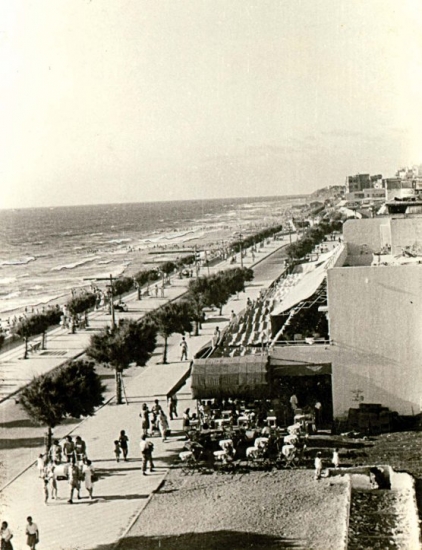
Tel Aviv promenade, 1946
In 1946 Arthur took a year off from UBC, University of British Columbia, Vancouver, Canada, to see the world.
He arrived in Palestine in June 1946, spending six months hitching all over the country and working as a volunteer on several kibbutzim. During his stay in Palestine he wrote daily to his family, describing his experiences. In one of his letters he describes the destruction of Yagur, which had a traumatic effect on him.
He joined Mahal in 1948, serving in the artillery corps, went back to Canada after the war of liberation, graduated law school and returned in 1950 to build his life here in Israel.
He was one of Israel's tourism pioneers. He opened the first drive yourself car office in the country (Tyulim) and the first tour bus company (sightseeing), later known as United Tours. He brought countless tourists to Israel, serving as one of Israel's best "Ambassadors of Zionism".
He is survived by his wife Leumit, three children and eight grandchildren.
July 12 1946
Haifa Palestine
Dear Folks,
We arrived in Haifa two days ago and are enjoying ourselves immensely. This certainly is a lovely city, the nicest so far for scenic beauty. The main purpose for this letter, however, is to tell you something that I saw yesterday that is impossible to believe, something that is beyond comprehension. I know what the press reported, for we heard the radio news, but take my word for it, as an eye witness account of the following news. The news is of enormous importance to Jews throughout the world to make them realize the heroic struggle of our people in Palestine. Will you please give the following article to the “Bulletin” and also to any other sources that might accept it so that people will know what is being done here.
“An eye-witness account of the Destruction of Yagur” A.H.Goldberg
The following are a few of the observations that I made while visiting Yagur, one of the largest and finest of the kibbutzim in Palestine. Yagur is a communal settlement about fifteen minutes from Haifa by bus. It was founded 25 years ago by heroic pioneers who made, from rock and sand, a thriving settlement with a dairy herd and also boasting of one of the finest vineyards and citrus groves anywhere in Palestine. There are 1,200 adult persons at Yagur including 500 children, all of whom are intensely proud of their great achievement.
During the early hours of Saturday, June 29, British troops (estimated 3,500) surrounded the settlement. They tried to force everyone into the main hall. The settlers refused and were forced in when the troops turned a heavy oil spray on them. Once they were in the hall the British wanted to arrest all the men. When the settlers refused to come out the troops threatened to use tear gas. The settlers refused to submit but asked permission to send the children and sick persons out of the hall. This the commanding officer refused and threw tear gas into the crowd, finally forcing every one out of the building which had been turned into shambles by the troops. When the settlers were forced out, choking and blinded, the troops were waiting to force them into trucks. Every person, including the children, resisted and were brutally beaten and forcefully dragged away to be arrested. Ten people required hospitalization. It required 5-10 troops to force each of the settlers into the waiting trucks. One elderly lady to whom I talked said that it took three troops to force her away. After a great struggle Yagur was left without settlers since the majority of people, including women and children, had been indiscriminately arrested and taken to British concentration camps. The troops then began their search. The resultant damage to personal property reminded me of stories that I had read of the Russian pogroms. The lovely large dining hall was destroyed, inside the walls were covered with oil spray, the floor dug up and everywhere was the smell of tear gas. This was a week and a half after the troops began operations.
We first of all saw the modern dental laboratories that Yagur had possessed. All the machines were completely smashed, false teeth and dental plates were scattered together with torn documents and broken medicine bottles. Instruments lay broken on the floor. Many valuable instruments had been stolen. We next visited the private dwellings. The floors were filled a foot deep with clothes torn from cupboards and bedding completely ripped and in some cases burned. Drawers had been opened and all the articles spilled on the floor, torn, tied in knots, cut with knives and stamped on. All books had been ripped, not a single vase or lamp was left that hadn’t been smashed. Every picture had been taken down from the walls and slashed.
We then visited the children’s quarters and it was pathetic to see the damage inflicted against the sole possessions of these children, a large group of whom had only been released from European concentration camps two months earlier. Every moveable thing was smashed, broken dolls and children’s toys. Photos of families lay torn on the floor together with fragments of precious letters. This was more than their childish minds could understand.
July 15 1946
(Continued from last letter)
One little girl, a survivor of Dachau asked her nurse in Hebrew “are the British really as bad as Hitler”. The older children realized what was happening and their spirit was wonderful. When the troops forced everyone into the dining hall the youth danced horas in the center of the crowd. When tear gas was thrown into the crowd the older children resisted being carried away. When everyone had been put in detention camps all children over eight years of age refused to eat the food offered by the British and they fasted for 36 hours until the women and children were allowed to return to their settlement. While troops were destroying walls one of the girls shouted to the troops “You can destroy our walls, but you'll never destroy our spirit.”
During the operation no one was allowed to milk the cows or feed the chickens and for a time it looked as if their valuable herd was going to die. Finally the authorities allowed a few children to perform these vital services. The neighboring settlements responded wonderfully, all available men, women and children volunteered to aid in saving the crops and in carrying on until the men were released. School children volunteered almost as a body. The city of Haifa sent a truckload of chocolates to Yagur only to have it returned with the message “we want help, not charity.” Two days after the operations began the authorities arrested the kibbutz doctor and beat him when he resisted.
The thing that remains foremost in my mind after seeing the pillage of Yagur is the memory of visiting their cemetery. It was a lovely spot shaded by trees, one hundred yards from the settlement. Foremost was a large monument to three settlers killed during the Arab riots and surrounding this were about 30 graves, seven of which had been desecrated by the troops. The graves had been dug into, tombstones had been shattered and flower pots and plants uprooted. One grave, where a child of one and a half years had been buried, had been dug into and the small stone overturned and shattered. As terrible and as unbelievable as this seems I have a photographic evidence of this shocking and disgraceful desecration of the cemetery of Yagur.
The Jews of the world have good reason to be proud of the people of the Yishuv who face each new cruelty and challenge with great determination and strength. The spirit of the Yishuv will never be broken. A greater Yagur will arise as a monument to the heroic spirit of the settlers who offered passive resistance against overwhelming odds.
A.H. Goldberg.
 The Bereavement & Loss Program
The Bereavement & Loss Program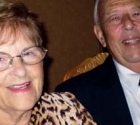 Thank You Eddie
Thank You Eddie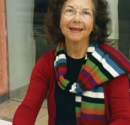 Save One Life, Save A World
Save One Life, Save A World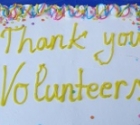 A new website in English - on Volunteering - Launched in Israel
A new website in English - on Volunteering - Launched in Israel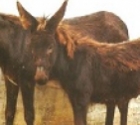 Help Needed for Abused Horses and Donkeys
Help Needed for Abused Horses and Donkeys Heather's Heseg
Heather's Heseg